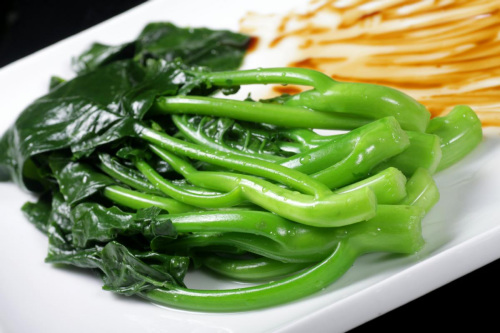
Stir-fried mustard greens. The vegetables are usually stir-fried to lock in the juices so they stay crisp but do not taste raw and green. (Photo Provided to China Daily)
Hong Kong caixin has become a designer vegetable, exported worldwide in styrofoam cases packed with crushed ice.
It is really grown in Shenzhen and Guangzhou, but exporters seem to prefer the more metropolitan tag.
Mustard greens are easy to grow but they must be harvested at the precise moment when the flower buds are just appearing. A day later, if the buds bloom, the value drops immediately, as the shoots take on a slight tinge of spiciness.
The shoots are harvested for the fresh market and sold in large green bunches which are quickly snapped up.
In Hong Kong, the wonton noodle shops will cook you a platter if you ask, simply blanching them in the noodle pot and then dousing them in a mixture of peanut oil and oyster sauce.
It is also popular in homes as a simple soup, with the leaves and stem separately cut and thrown into boiling water, together with thinly cut and velveted slices of lean meat.
There is also the simple stir-fry, which all novice cooks learn to do in their first lessons in the kitchen.
The caixin is carefully washed, then the leaves are stripped off. The tough fibers on the lower stems are peeled, exposing the tender insides. The leaves and stems are placed in separate piles.
Next, aromatics. Either thin slices of ginger or a minced clove of garlic go into hot oil. The stems are tossed into the wok first, followed by the leaves. It all takes about two minutes before a platter of bright green mustard green goes on the table.
As always, nothing goes to waste. Older leaves left on the plant are harvested for pickles. The tough stems are chopped up and salted, then fermented in urns until they miraculously transform into salted vegetables that go well with a bowl of plain porridge in summer.


















































